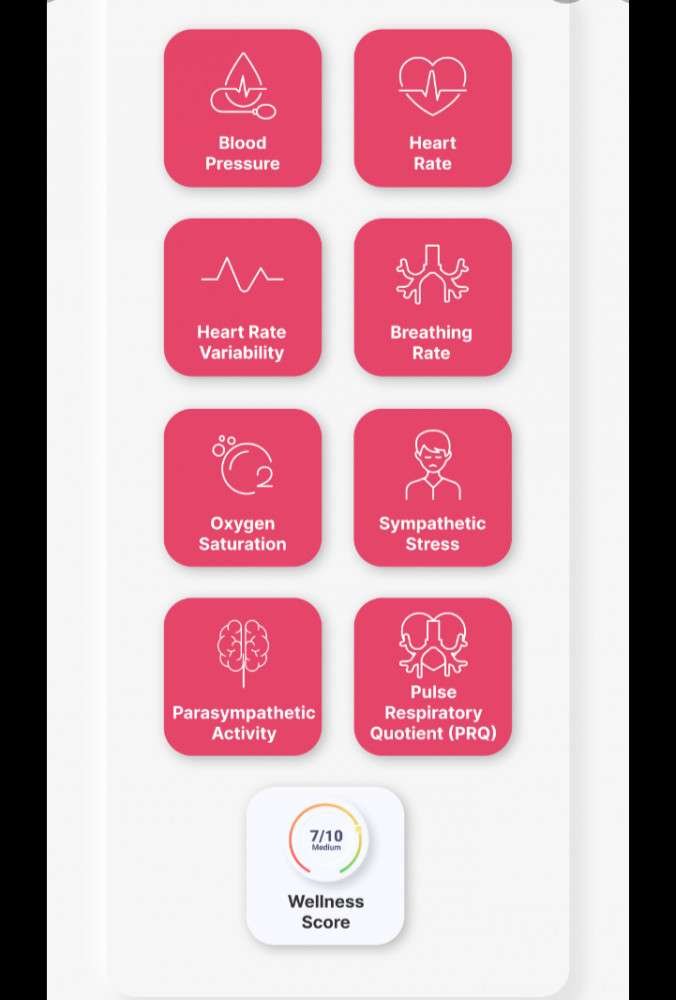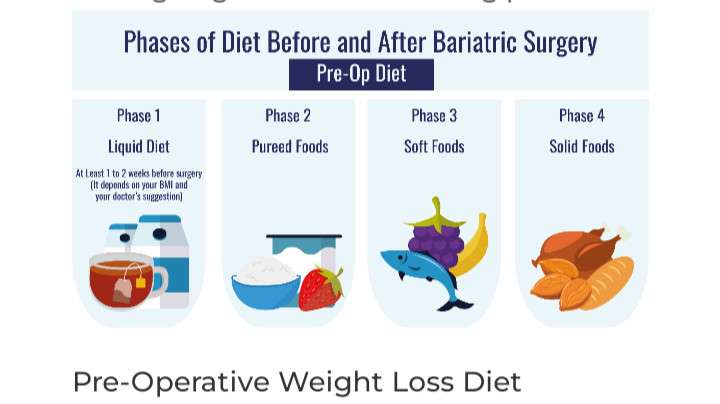Bariatric Surgery Candidates – Last Weight Loss Resort
As an Amazon affiliate I earn from qualifying purchase at NO extra cost to you
Childhood obesity is a serious medical condition that affects children, adolescents, and adults. If left unchecked, it causes a barrage of fatal health complications. The obesity crisis in America has reached epic proportions. If these children, adolescents, and adults continue this path, they will end up as bariatric surgery candidates. 
Bariatric Surgery Candidates
Unfortunately, bariatric surgery candidates are getting younger and younger. Children of today are diagnosed with health conditions once reserved for their parents and grandparents. Carrying excessive weight overtime, causes diabetes, high blood pressure and high cholesterol. In addition, more and more children need weight loss surgery.
What is Bariatric Surgery
Bariatric surgery is a medical procedure that removes part of your stomach and reduces the amount of food you can eat. There are several ways this is accomplished- Remove part of the stomach, place a band around the stomach, or relocate the opening between the stomach and the small intestines. Although most surgeries are done on adults, nowadays, parents approve their teenagers to have surgery.
Can Teenagers Get Bariatric Surgery?
Although bariatric surgery is a viable option for many people, it is not advisable for everyone. However, an obese teenager is a good candidate. First, a highly qualified, bariatric specialist is selected to perform the surgery. Then he/she does an assessment to ensure that the teen meets his pre-approval. The current recommendation is to wait until age 13 for girls and age 15 for boys. To combat the rise in obesity, parents must take immediate action.
Childhood Obesity Rates Rising
Childhood obesity rates are rising at a precipitous rate. As these numbers continue to rise, so do the rates of sickness and disease. The children and adolescents aged 2-19 are at high risk. 
The Prevalence of Obesity
The prevalence of childhood obesity remains a critical public health concern in the United States. According to the most recent CDC data, the rates have continued to increase. The overall prevalence of childhood obesity is now approximately 20.7% and affects about 15.5 million children and adolescents aged 2-19 years. The breakdown by age group shows:
- Ages 2-5 years: 13.4%
- Ages 6-11 years: 22.0%
- Ages 12-19 years: 23.3%
Significant disparities persist across racial and ethnic groups:
- Hispanic children: 28.3%
- Black children (non-Hispanic): 25.6%
- White children (non-Hispanic): 16.8%
- Asian children (non-Hispanic): 9.3%
These rates have further impacted by the COVID-19 pandemic, with many children experiencing accelerated weight gain due to disruptions in routine, decreased physical activity, and changes in eating patterns during lockdowns and school closures.
The CDC continues to emphasize that obesity is a complex disease influenced by multiple factors:
- Genetic predisposition
- Environmental factors
- Socioeconomic status
- Access to healthy foods
- Safe spaces for physical activity
- Sleep patterns
- Stress levels
- Medications
- Gut microbiome
- Healthcare access
Current Prevention and Treatment Approaches:
- Community-based interventions through programs like SPAN (State Physical Activity and Nutrition Program), HOP (High Obesity Program), and REACH (Racial and Ethnic Approaches to Community Health)
- Medical interventions include:
- Lifestyle modifications
- Behavioral therapy
- Newly approved medications, including GLP-1 receptor agonists
- Multidisciplinary approach to treatment
- Policy initiatives focusing on:
- School nutrition programs
- Physical education requirements
- Community development for active living
- Healthcare access improvements
The CDC has expanded its investment in prevention programs, now supporting:
- 20 states (up from 17)
- 65 community and tribal organizations (up from 50)
- 18 land grant universities (up from 16)
Health consequences of childhood obesity include increased risk of:
- Type 2 diabetes
- Cardiovascular disease
- Asthma
- Sleep apnea
- Joint problems
- Psychological issues, including depression and anxiety
- Social stigmatization
- Increased risk of adult obesity
The focus has shifted to viewing obesity as a chronic disease requiring comprehensive, long-term management rather than simply a lifestyle choice. This approach emphasizes the importance of creating supportive environments and addressing systemic barriers to healthy living.
Houston, We Have a Major Health Crisis
Do you get the picture? Obesity affects not just a child’s cardiovascular health, it also affects all aspects their lives, including their psychological health. The association between child obesity and other medical conditions makes it a critical public health issue. However, the history of obesity is nothing new. It started back in the early 1950s. Let’s take a glance at the history of bariatric surgery.
History of Bariatric Surgery
Obesity and other health problems associated with it have been around for centuries. However, the bariatric medicine is relatively new, dating back to 70 years. During this time, medical and technological advancements led to effective and safe methods of various types of bariatric surgery. In fact, one of the first candidates for weight loss surgery was the King of Leon. He weighed in at approximately 550.11 pounds (240 kg).
The First Bariatric Surgery
The King of Leon, D. Sancho, was the first person to receive first bariatric surgery during the 10th century. He was later referred to another Jewish surgeon, Hasdal lbn Shaprut, in Cordoba, Spain. According to the records, Hasdal sutured King of Leon’s lips together. He left just a small opening in the center. This way, the king sipped a liquid diet of herbs through a straw. Consequently, King Sancho quickly lost half of his body weight, returned to Leon, and regained his throne. 
Timeline of Bariatric Surgery
The history of bariatric surgery spans from 1950 to the present day. Many new updates have been added since that time. As in any type of surgery, there are always risks.
- 1950: Intestinal Bypass – (aka jejunoileal Bypass (JIB), bypasses the large part of the intestines.
- 1966: Open Gastric Bypass – cuts the stomach open to create a new stomach and bypass intestines
- 1970: Open Gastroplasty – Open Gastroplasty is the start of vertical banded gastroplasty splitting the stomach in two.
- 1978: Gastric Band -Gastric band, or LAP-BAND, places a band around the stomach to reduce its size.
- 1980: Vertical Banded Gastroplasty – Vertical banded gastroplasty or stomach stapling, splits the stomach in two sections
- 1986: Duodena Switch – (OS) Reduces the stomach size and bypasses the intestines.
- 1994: Laparoscopic Gastric Bypass – Gastric bypass is one of the most popular bariatric surgeries today.
- 1997: Open Gastric Sleeve – Open gastric sleeve uses one long incision on the belly to remove 80% of stomach
- 2000: Laparoscopic Sleeve – Gastric sleeve surgery removes and reduces 80% of the patient’s stomach.
- 2001: LAP-BAND Approved or Gastric Banding, became FDA approved in the United States.
- 2015: Balloon Approved – Gastric balloon is FDA Approved in the United States.
Physical Complications of Childhood Obesity
Type 2 diabetes:
This chronic condition affects the way your child’s body uses sugar (glucose). Obesity and sedentary lifestyle increase the risk of type 2 diabetes. 
High blood pressure and high cholesterol:
A nutrition-deficient diet cause children to develop one or both if these conditions. These factors contribute to the buildup of plaque in the arteries. This causes arteries to narrow and harden, leading to heart attack and stroke later in life.
Joint pain:
Extra weight puts extra stress on hips and knees. Childhood obesity cause pain and sometimes injuries in the hips, knees and back.
Breathing problems:
Asthma is more common in children who are overweight. These children are more likely to develop asthma or obstructive sleep apnea, where the child’s breathing repeatedly stops and starts during sleep.
Non-alcoholic fatty liver disease (NAFLD):
This disorder has no covert symptoms, but it causes fatty deposits to build up in the liver. NAFLD leads to scarring and liver damage.
Social and Emotional Complications:
Children who struggle with obesity are more prone to teasing and bullying by their peers. This causes low self-esteem and risk for anxiety and depression
Risk Factors that Contribute to Obesity
Children do not become overweight overnight. More than often, carrying extra weight is a result of overeating, lack of physical activity or is caused by genetics. Let’s take a deeper look at why children are in the category of the obese. Here are risk factors to consider:
Diet:
Regular intake of high-caloric, low nutritional foods and drinks cause rapid weight gain. Diets that include lots of processed, bakery products, candy, cookies, desserts, vending machine snacks, and sugary, flavored sport drinks are detrimental to a child’s health. These are the culprits in child obesity.
Lack of physical activity:
Schools that discontinue physical education classes are doing our children a disservice. Children who don’t exercise are more likely to gain weight. Exercise helps them burn calories. Way too much time is spent in sedentary activities such as video and watching TV. These shows often feature ads for unhealthy snacks and other fattening foods. In fact, excessive screen time replaces outdoor play.
Family Factors:
Children raised in a family of overweight people, are more likely to put on weight. Especially, if they have access to high-caloric foods that are easy to access. Furthermore, physical activity is not encouraged, and cellulite deposits increase. They have no one to model healthy behaviors in terms of food. 
Psychological Factors:
Personal, parental, and family stress in a child’s life are risk factors for obesity. As a result, some children overeat to cope with problems, deal with emotions, or to fight boredom. Their parents, most likely have similar tendencies.
Socioeconomic Factors:
People in communities with limited resources have limited access to supermarkets. As a result, they are forced to buy convenience, cheaper foods that have longer shelf life. Frozen meals that don’t spoil quickly. Parents buy crackers, cookies, potato chips and sodas because this is what they can afford. Also, children in lower-income areas don’t have the luxury of playgrounds that are safe.
Certain Medications:
Some prescriptions increase the risk of developing obesity. These include prednisone, lithium, amitriptyline, paroxeline (Paxil) and other drugs. If your child takes any one of these, the weight gain is inevitable. Consequently, every case of child obesity is slightly different and can be caused by any one of the reasons above.
Final Thoughts
Attention all parents. Listen up. It is your primary responsibility to keep your children healthy. No child should be forced to get bariatric surgery. Step up to the plate. Monitor what your child eats and drinks. Make sure they get enough exercise. Limit their screen time and make sure they get lots of fruits and vegetables. Also, find out about the community programs that are offered by the government. No child’s health should be left aside.
Thank you for joining me in this topic about bariatric surgery. This is the first post. However, there is more information on this topic to be covered. If you find this post useful, please share it with other friends and family. I also look forward to your questions, comments, and feedback. Feel free to use the space provided below. 
Yours truly.
Rachele, Founder
mybluegenes.com (website)
rachele@mybluegenes.com (email)


The condition of having more fat than normal in the body is called obesity. Obesity and body weight gain (overweight) are generally understood to be the same thing, but they are two different conditions. If a person’s weight is more according to his age and height, then he is called overweight. However, the muscles, bones, fat and water present in the body determine the body weight of a person. Obesity has become a global health problem. According to a report, 1.9 billion people are overweight in today’s time and about 650 million people are obese. The level of obesity in India is increasing regularly and at present around 135 million people are obese in India.
According to the body mass index (BMI), obesity is divided into several types, which are as follows –
Those whose BMI is 25 to 29.9 are placed in the category of overweight, which is not obese.
Those with a BMI of 30 to 34.9 are Class 1 obese, which means they have a lower risk of becoming obese
People with a BMI of 35 and 39 fall into Class 2 obesity, which means they have a slightly higher risk of becoming obese.
People with a BMI of 40 and above fall into Class 3 obesity and have a higher risk of becoming obese.
In simple words, if a person is taking so many calories through his food daily, which he is not able to spend with the help of physical activities, then this is the biggest reason for obesity. There can be many different reasons for this to happen, such as –
Environmental factors – Lifestyle habits such as the type of food a person eats and the number of activities he does throughout the day, etc. have an effect on his body weight.
Mental state – Emotions play a very important role while choosing the right food for oneself. Overly happy and upset people usually eat more. Long-term disorders such as depression and anxiety can alter a person’s eating habits and lead to obesity.
Genetic factors – If a person has a problem of obesity even before in the family, then other people may be prone to obesity.
Health problems – Some health problems such as hypothyroidism, Cushing’s syndrome and depression are also some conditions, which affect the metabolism of a person and due to this a person can become obese.
Medications – Certain types of drugs like anti-depressants and steroids can also cause obesity as a side effect.
BMI is calculated to diagnose the problem of obesity. At the same time, waist circumference is checked to diagnose abdominal obesity. If a man has a waist circumference of 94 cm or more and a woman is 80 cm or more, then he is confirmed to be obese.
There is no specific way to prevent obesity. However, eating a good and balanced diet and increasing physical activity as needed can be a good way to avoid obesity. Adopting good lifestyle habits can help prevent weight gain, including –
Balanced diet – It is not possible to eliminate obesity in the body completely, but by taking a balanced diet for a long time, this obesity can be reduced gradually. Include plenty of fruits and vegetables in your diet and eat other low-calorie foods.
Physical activities – Doing regular exercise and other physical activities will help you in weight control. Adults should get at least 150 minutes of exercise every week. Making some small changes in your daily routine can also help in curbing increasing body weight, such as taking the stairs instead of taking the lift.( Post by Saini saharan)
Saini,
Thank you for your comments. It seems that you are versed on the concept of obesity. You are aware of what it takes for one to avoid obesity. However, when a child is obese, parents must do everything in their power to see that changes are made in their lifestyle habits. They have the ability and responsibility to ensure that the child gets proper nutrition and exercise. These two adjustments can make a big difference over time.
I will be posting more articles related to this topic so feel free to chime in whenever you can.
Rachele
Saini,
BMI can give us a lot of information. The normal BMI is between 18.5 and 24.9. A BMI under 18.5 is underweight. If your BMI is 25-29.9 is overweight. Between 30-39.9 is considered obese. So, when we can keep our BMI in normal range, this will help us maintain our health. This is just one indicator that parents need to keep in check.
Rachele
Saini,
If you have children with high BMI, please make an appointment with your primary care physician. In many cases this can be reversed with proper diet and exercise.
Also, make sure you keep your own BMI in check. Many medical clinics and community hospitals have special programs to help you with any type of weight issues.
Rachele
Yes,
Child obesity is now a worldwide crisis. It not only effects the child’s physical body, but it also impacts children on a social and psychological level as well. Parents must be vigilant and get their children the help they need. Obese children are often bullied, and this can cause them to have lower self-esteem.
Thank you for taking time out of your busy day to connect with me and feel free read my other posts and leave comments.
Rachele
Thank You
Rachele
Hi Saini,
I hope all is well with you and your family.
As you already know obesity is rampant all across the globe.
I am joining the fight to conquer this catastrophe and
I am also hoping to stop this disease in its track.
You may be interested to know that science and technology are zooming in with amazing
devices. Here is the newest way to check BMI levels in the comfort of your home.
==> Check here https://amzn.to/3gpZCvP